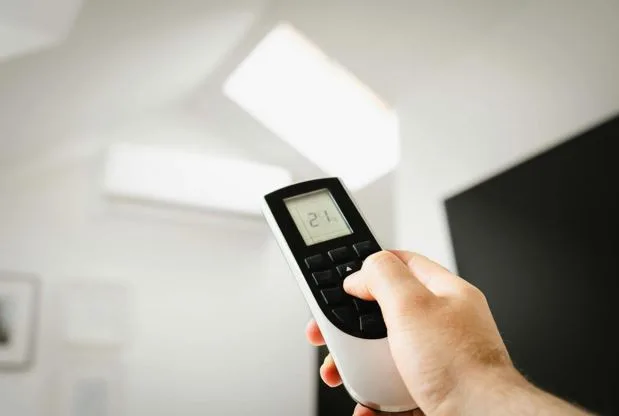Cell Line Knockout Guide: Proven Steps to Boost CRISPR Success
Cell Line Knockout Guide: Using CRISPR Gene Editing Effectively
You design the perfect sgRNA, transfect your cells, and wait weeks—only to find your knockout clones don’t validate. For many labs this frustrating cycle of low efficiency, off-target effects, and endless screening is routine. Surveys show more than half of research teams experience at least one failed knockout before success, losing valuable time and funding in the process.
It doesn’t have to be that way. With modern CRISPR gene editing—Click here to learn more—what once took months can now be achieved in weeks with far greater precision. This technology has turned gene disruption from a specialist’s art into a mainstream lab procedure, provided it is planned and executed carefully.
This guide gives researchers practical insights into cell line knockout, with clear steps, real-world tips, and a checklist to boost success and avoid false starts. Each section builds on the last, walking you from concept to validated cell line.
What Is Cell Line Knockout? Principles and Key Differences
A cell line knockout is a stable cell model where one or both copies of a target gene are disrupted so no functional protein is produced. This differs from a knockdown, which only reduces expression temporarily, or a knock-in, which inserts new DNA.
Knockout cell lines let researchers study gene function, validate drug targets, and model diseases in a controlled setting. Because the change is permanent and heritable, they give cleaner phenotypic readouts than short-term silencing. They are also easier to reproduce across labs, which makes collaboration and data comparison much simpler.
If you want to explore detailed protocols and best practices for creating a cell line knockout, Click here. Next we’ll see how CRISPR makes these advantages easier to achieve.
How CRISPR Enables Efficient Knockouts
CRISPR/Cas9 Mechanism for Knockouts
A short guide RNA directs Cas9 to a specific genomic locus. When Cas9 cuts both strands, the cell’s repair machinery introduces insertions or deletions (indels) that disrupt the coding sequence and knock out the gene.
Guide RNA Design and Target Site Selection
Target early exons or essential domains to avoid truncated but active proteins. Dual-sgRNA strategies can delete larger fragments for a complete loss of function.
Delivery Methods Compared
Transient transfection, viral vectors, and electroporation differ in efficiency depending on cell type. Run a small pilot to pick the best, and remember to monitor cell viability as you test.
Rigorous Validation
Sanger or next-generation sequencing confirms edits; STR profiling verifies cell line identity; protein assays such as Western blotting or immunofluorescence ensure the gene product is absent. These steps produce faster, more reliable knockout models and give you confidence that downstream experiments are based on the correct genotype.
Building on this foundation, the next section turns to real-world practices that can boost success rates even further.
Boosting Success: Best Practices from Real Lab Challenges
Even with CRISPR/Cas9, labs still struggle with low efficiency or unstable clones. Planning and execution make the difference. Key practices:
Best Practice 1 — Optimise Target Design
Use validated tools to score on-target activity and off-target risk. For difficult genes, a dual-sgRNA strategy to delete a larger region can dramatically increase the chance of a full knockout.
Best Practice 2 — Match Delivery Method to Cell Type
No single delivery method works for all cells. Compare transfection, viral vectors, and electroporation in small pilots before scaling up. This up-front testing often saves weeks of troubleshooting later.
Best Practice 3 — Balance Editing and Cell Health
Titrate reagents to maximise editing while maintaining viability. Small adjustments at this stage prevent loss of promising clones.
Best Practice 4 — Plan for Adequate Clones and Screening
Pool editing can enrich for edited cells, but single-cell cloning and validation remain necessary. Build in time and resources for this step.
Best Practice 5 — Validate at Multiple Levels
Confirm protein loss and cell identity, not just sequencing, to ensure your line truly represents the intended knockout.
Integrating these practices raises success rates and prevents wasted time and resources. Think of them as an investment at the planning stage that pays off when you start downstream assays.
Applications of Cell Line Knockout in Functional Genomics
Knockout cell lines drive many modern discoveries. Four high-impact uses include:
Application 1 — Drug Target Validation
Confirm whether inhibiting a gene changes a disease-relevant phenotype before investing in a compound.
Application 2 — Pathway Mapping and Mechanistic Studies
Disable genes to map signalling pathways; for example, knocking out PD-1 or CTLA-4 helps reveal how tumours evade immunity.
Application 3 — Disease Modelling
Mimic inherited loss-of-function mutations seen in patients to study rare diseases or compensatory pathways.
Application 4 — Functional Genomics Screens
Large-scale CRISPR libraries rely on robust knockout cell lines as baselines for pooled screens.
Including knockout cell lines in these workflows allows researchers to move from correlative data to direct tests of gene function—accelerating both basic science and translational research.
Case Insight: Building Reliable Knockout Cell Lines Faster
Imagine a team investigating an immune checkpoint gene such as PD-1.
The Challenge
Older approaches meant low transfection efficiency, high off-target risk, and weeks of clonal screening.
The Approach
A carefully designed CRISPR strategy—two sgRNAs at early exons, optimised delivery, and sufficient clones—moved them from pilot tests to validated knockout clones in just weeks. They confirmed both genotype and protein loss.
The Outcome
The team produced a stable, reproducible knockout model in roughly half the time, generating clear phenotypic data and proceeding to drug-response testing without delays. This shows how planning, optimisation, and validation combine to make even difficult targets manageable on a realistic timeline.
How to Get Started: Resources and Guides
Think about success before you pick up a pipette. Ask yourself:
- Is your cell line amenable to transfection or infection?
- Do you know which exons or domains to target?
- Have you planned enough clones and validation assays?
Answering these questions early can save weeks of troubleshooting and help you decide whether to build your own cell line or use a provider with established workflows. Once you have a plan, consult detailed protocols, design tools, and case studies. High-quality guides and checklists show what works and highlight pitfalls to avoid. By starting with a clear plan and reliable resources, you increase the odds of creating a stable, reproducible knockout cell line on your first attempt.
(At the end you can gently remind readers that Ubigene’s guides and in-stock knockout cell line information are available if they want deeper details—without adding a third anchor text here.)
Conclusion: Mastering Cell Line Knockout with CRISPR
Building a reliable knockout cell line isn’t just about the right tool; it’s about combining solid design, careful execution, and rigorous validation into a repeatable process. CRISPR makes this possible, but only when applied strategically.
Key Takeaways
- Start with a clear plan. Map out targets, delivery, and validation before you begin.
- Pilot and optimise. Test guides and conditions on a small scale to find the best combination.
- Validate at multiple levels. Confirm both genotype and phenotype to ensure a true knockout model.
Applying these principles increases success rates, reduces wasted time, and turns CRISPR gene editing from a buzzword into a reliable everyday tool in your lab.





